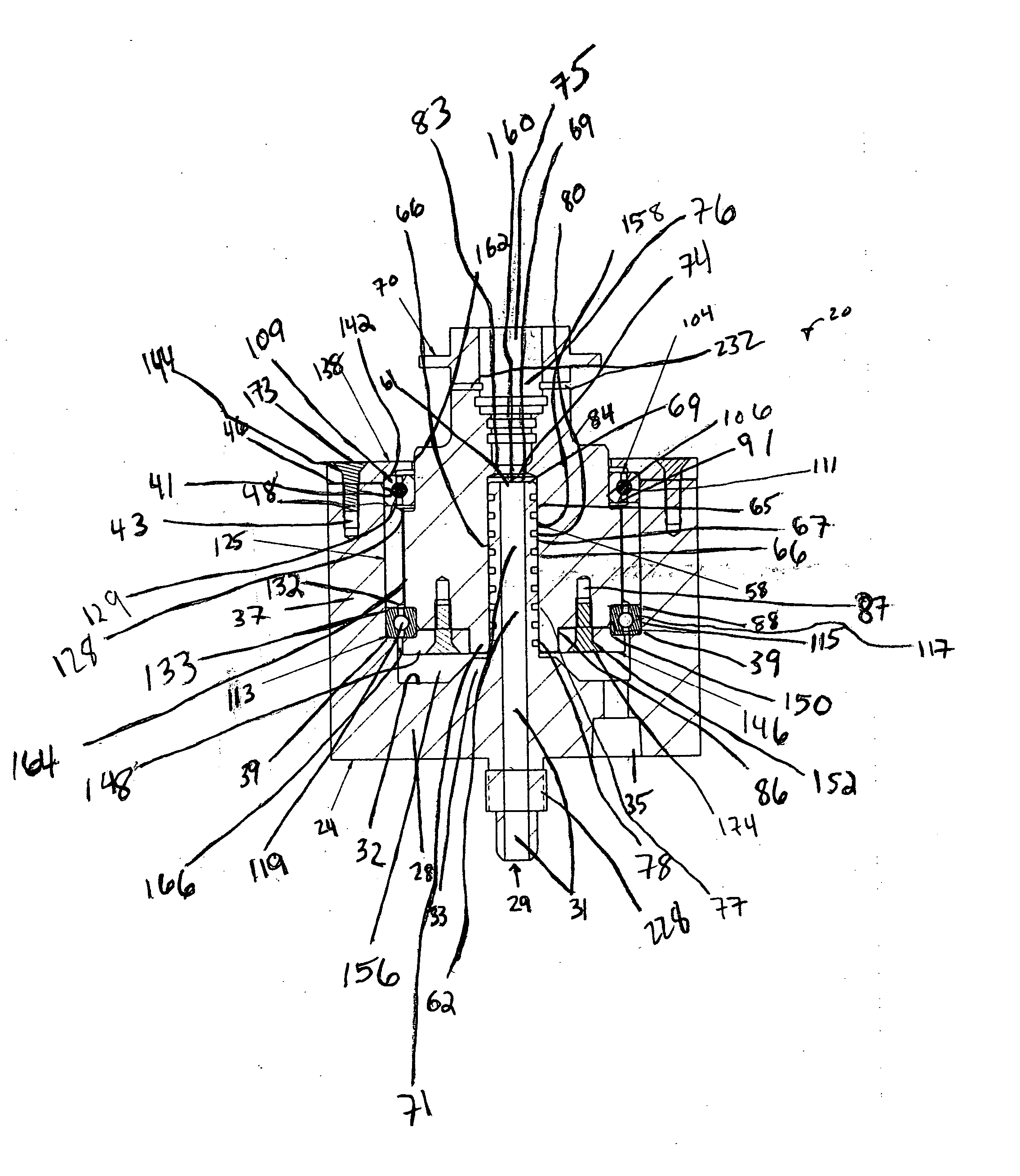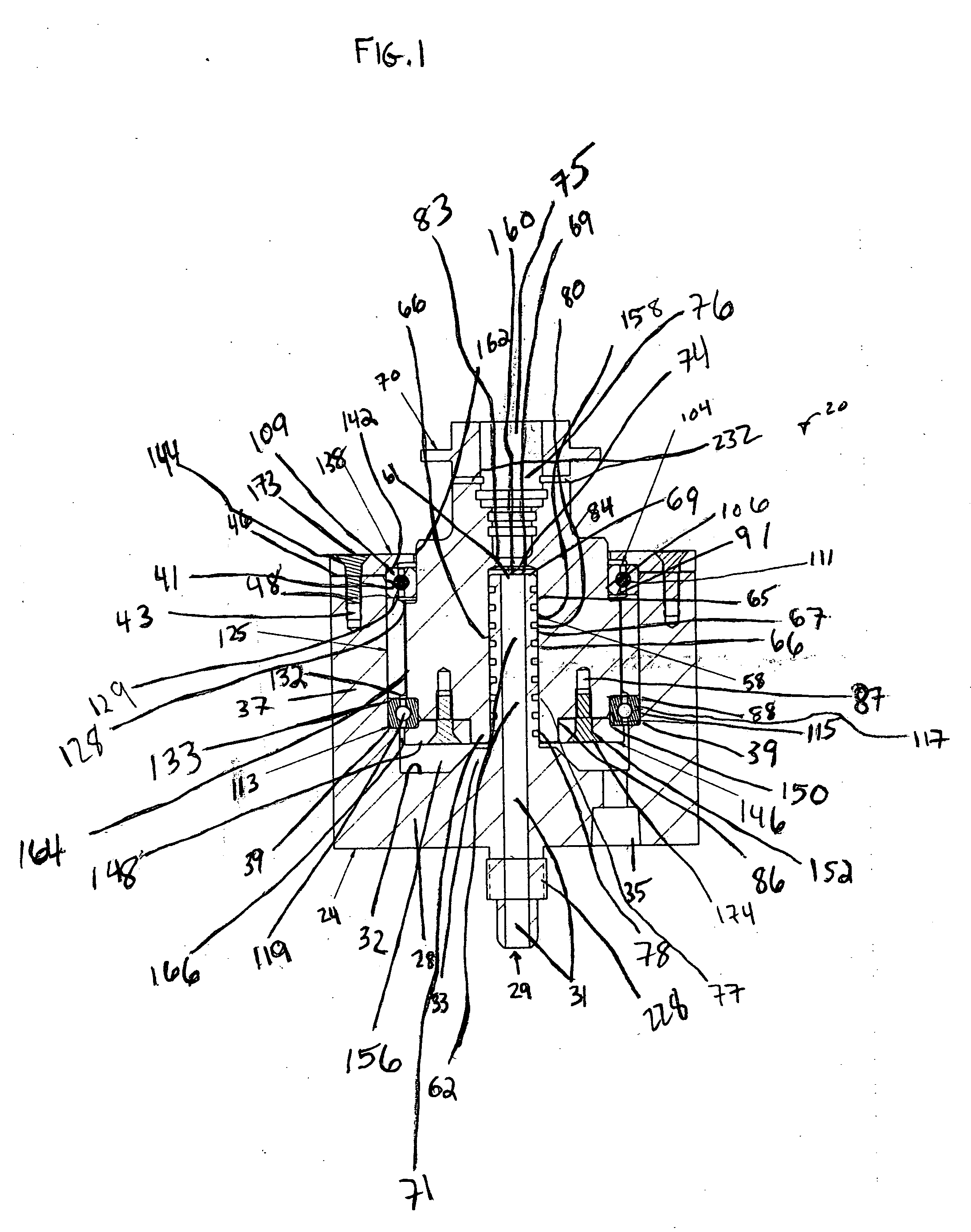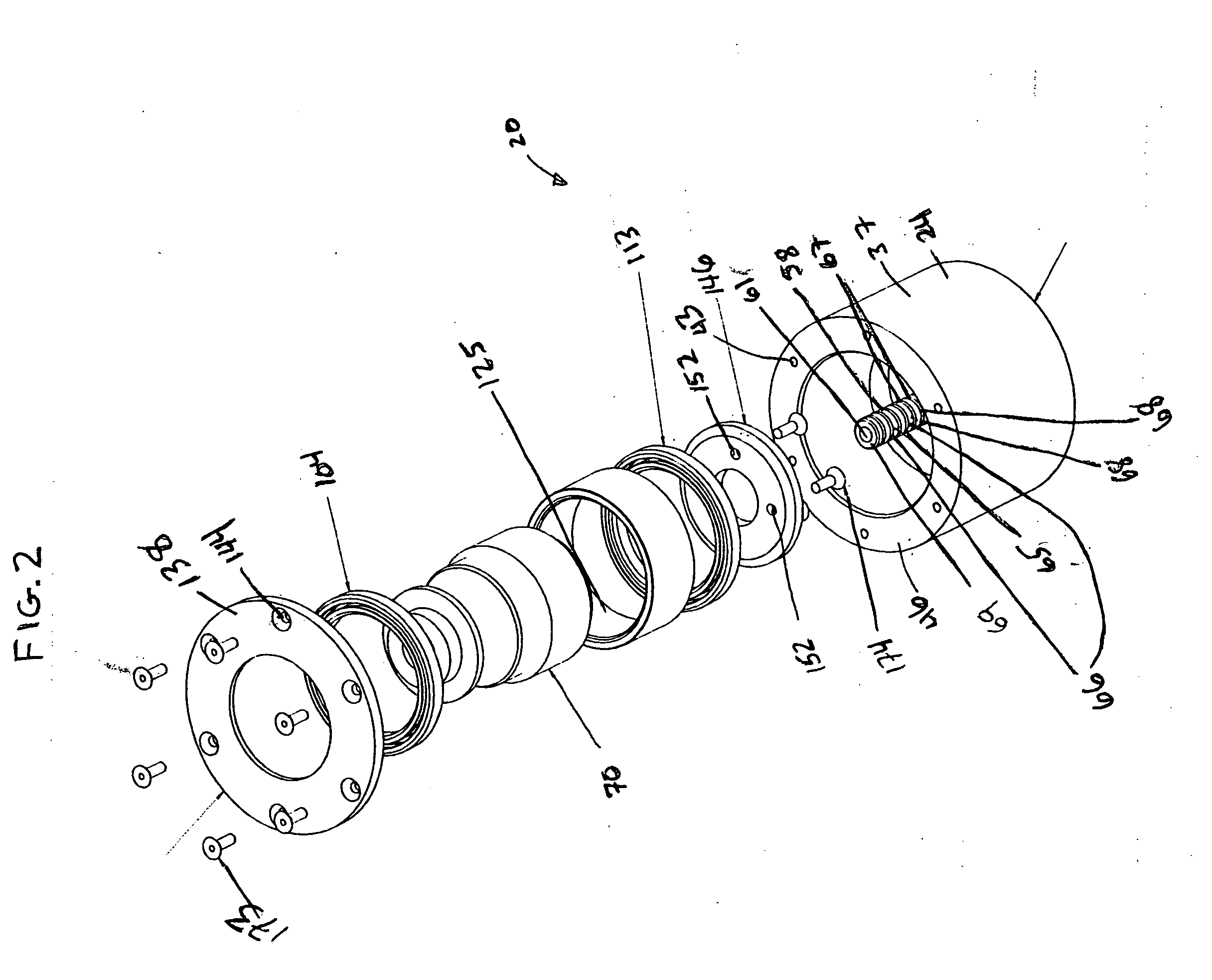Rotary unions, fluid delivery systems, and related methods
a technology of fluid delivery system and rotary union, which is applied in the direction of water supply installation, transportation and packaging, mechanical equipment, etc., can solve the problems of reducing the service life and affecting the operation of the rotating component. , to achieve the effect of reducing the level of debris generation, excellent performance and reducing the wear level of the componen
- Summary
- Abstract
- Description
- Claims
- Application Information
AI Technical Summary
Benefits of technology
Problems solved by technology
Method used
Image
Examples
Embodiment Construction
[0026] The embodiments of the present invention described below are not intended to be exhaustive or to limit the invention to the precise forms disclosed in the following detailed description. Rather a purpose of the embodiments chosen and described is so that the appreciation and understanding by others skilled in the art of the principles and practices of the present invention can be facilitated.
[0027] An exemplary rotary union according to the present invention is described below with reference to FIGS. 1-5. As shown, rotary union 20 includes a cylindrical housing 24, a cylindrical post 58, and a cylindrical rotor 70, which facilitate the transfer of process fluid(s) among locations that rotate relative to one another.
[0028] Housing 24 has a fluid path 31 (e.g., a through-bore) through which a fluid can be conveyed through housing 24. Preferably, housing 24 has a bottom (or base portion) 28. As shown, fluid path 31 extends through bottom 28. Fluid path 31 defines part of a flu...
PUM
 Login to View More
Login to View More Abstract
Description
Claims
Application Information
 Login to View More
Login to View More - R&D
- Intellectual Property
- Life Sciences
- Materials
- Tech Scout
- Unparalleled Data Quality
- Higher Quality Content
- 60% Fewer Hallucinations
Browse by: Latest US Patents, China's latest patents, Technical Efficacy Thesaurus, Application Domain, Technology Topic, Popular Technical Reports.
© 2025 PatSnap. All rights reserved.Legal|Privacy policy|Modern Slavery Act Transparency Statement|Sitemap|About US| Contact US: help@patsnap.com



